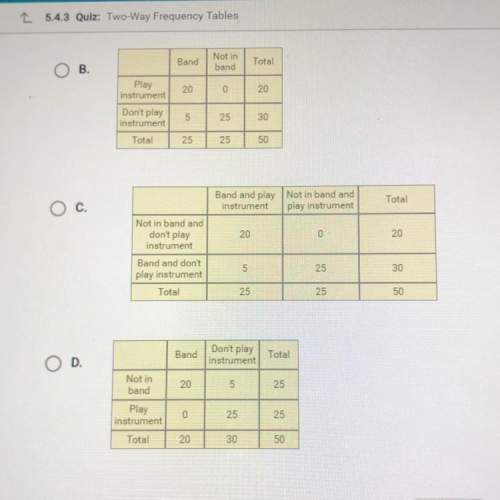
Mathematics, 20.11.2019 01:31 jlchandl
Match the sets of points representing one-to-one functions with the sets of points representing their inverse functions.
tiles
h = {(1,1), (2,2), (3,3), (4,4), (5,5), (6,6)}
g = {(1,3), (2,6), (3,9), (4,12), (5,15), (6,18)}
f = {(1,2), (2,3), (3,4), (4,5), (5,6), (6,7)}
i = {(1,1), (2,3), (3,5), (4,7), (5,9), (6,11)}
pairs
h-1 = {(1,1), (2,2), (3,3), (4,4), (5,5), (6,6)}
i -1 = {(1,1), (3,2), (5,3), (7,4), (9,5), (11,6)}
g-1 = {(3,1), (6,2), (9,3), (12,4), (15,5), (18,6)}
f -1 = {(2,1), (3,2), (4,3), (5,4), (6,5), (7,6)}

Answers: 2


Another question on Mathematics


Mathematics, 21.06.2019 22:10
Akitchen is 12 ft. by 14 ft. with 10 ft. high walls. how much would it cost to put vinyl flooring in this room? $8.80 per ft
Answers: 1

Mathematics, 22.06.2019 03:30
Of the 50 us states 4 have names that start with the letter w
Answers: 2

Mathematics, 22.06.2019 03:30
Paul needs to buy 5/8 pound of peanuts. measure a pound into sixteenths. what measure is equivalent to 5/8 pound
Answers: 1
You know the right answer?
Match the sets of points representing one-to-one functions with the sets of points representing thei...
Questions

Mathematics, 24.11.2020 19:30

Mathematics, 24.11.2020 19:30



Social Studies, 24.11.2020 19:30

Mathematics, 24.11.2020 19:30


Mathematics, 24.11.2020 19:30



Social Studies, 24.11.2020 19:30

History, 24.11.2020 19:30



Mathematics, 24.11.2020 19:30



Mathematics, 24.11.2020 19:30


Mathematics, 24.11.2020 19:30

 ,
,









